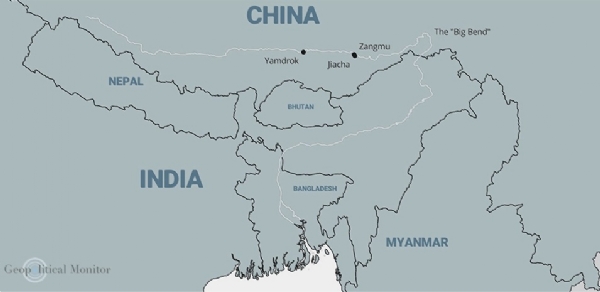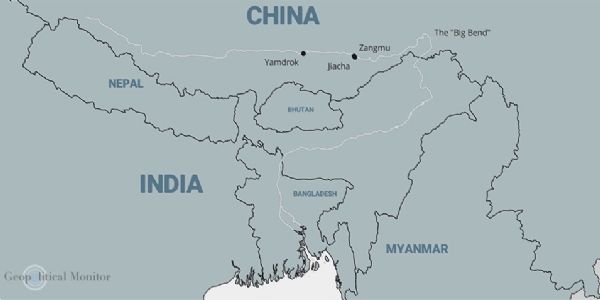
Beijing, August 7 (HS): China has initiated the construction of a dam on the Yarlung Zangbo River, located just 30 kilometers from India's border, known in India as the Brahmaputra. This Yarlung Zangbo dam project will allow China to exert control over water flow across the international border, a move reported by the Geopolitical Monitor as part of China's broader ambitions for water dominance that could provide strategic leverage in the region. Although Beijing presents the project as a renewable energy initiative and part of its Tibet development plan, analysts suggest it signals an intention for geopolitical hegemony beyond mere energy security.
Chinese Prime Minister Li Qiang has launched the project, which is expected to provide around 70 gigawatts of electricity, surpassing that of the Three Gorges Dam. The timing of this project coincides with rising regional tensions and the Chinese government’s ongoing efforts to strengthen its control over Tibet and its water resources. The dam involves complex engineering, including proposals to dig multiple routes below the Namcha Barwa mountain range for water diversion, which has been described as one of the most ambitious mountain engineering undertakings in history, with an estimated cost of 1.2 trillion yuan ($167 billion).
This initiative is prioritized by President Xi Jinping, aiming to harness Tibet's hydropower potential for electricity to support China's eastern metropolises, which constitutes about one-third of China's total hydropower capacity. Companies like Dongfang Electric and Pinggao Group are interested in the project, which could potentially lift China's GDP growth by 0.1 percentage points. A state-controlled corporation, China Yajiang Group, has been established to oversee the project.
If completed, the dam could displace over 1.2 million residents and destroy numerous sacred sites, which poses a significant human cost to Tibetan communities and threatens their cultural identity. Following protests over the Kamthok dam project in 2024, there are concerns regarding local resistance. Additionally, the announcement of this construction follows India's suspension of the Indus Water Treaty with Pakistan, further complicating regional geopolitics.
Located at a strategic nexus of geopolitical fault lines, the dam will significantly impact millions of people reliant on the river, which sustains approximately 130 million residents in India and meets critical irrigation needs in Bangladesh. Environmental studies have cautioned about the dangers of massive dam projects in seismically volatile regions like the Himalayas, hinting at potential ecological and resource conflicts emerging from China's methods of water control, reminiscent of adverse effects reported in the Mekong River due to previous dam constructions. The completion target for the Yarlung Zangbo dam is set for 2030, raising alarms about future resource disputes in South Asia.
Hindusthan Samachar / Jun Sarkar








